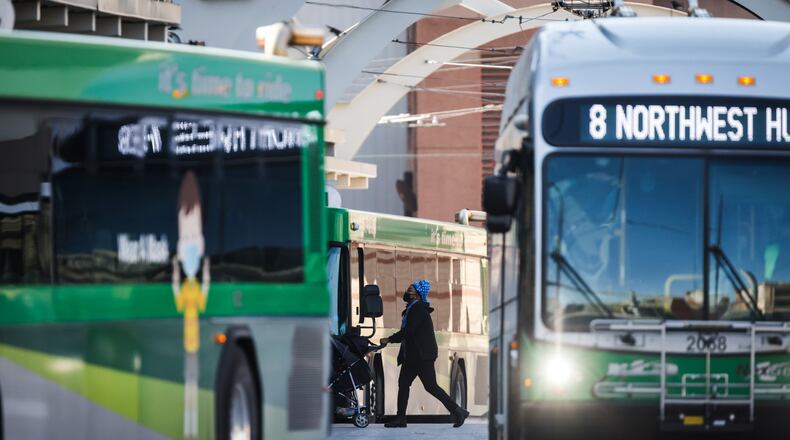The RTA’s last major fare adjustment took place in 2009 and since then consumer prices have increased by more than 35%, said Greater Dayton RTA CEO Bob Ruzinsky.
“Over the years we have dealt with increasing costs by cutting routes, reducing service levels, streamlining administration and implementing technology in areas that helped reduce costs,” he said. “Today we are simply faced with the reality that in order to maintain our current services, the rider is going to have help cover the rising costs of doing business.”
Changes coming
The Greater Dayton RTA Board of Trustees recently approved a variety of transit fare adjustments that will make using public transit more expensive.
Single-ride fares on fixed route buses will increase from $2 today to $2.20 on Jan. 1, 2025; $2.40 on Jan. 1, 2026; and $2.50 on Jan. 1, 2027.
Single-ride fares last increased by 25 cents in 2018. The fare was $1.75 between 2009 and 2018.
Daily pass fares will increase from $4 today to $4.50 at the start of 2025, $5.50 in 2026 and $6.50 in 2027.
Monthly passes, which have not changed prices since 2009, will rise from $55 today to $60 next year, $70 the year after and $80 in 2027.
RTA paratransit fares, which also last increased in 2009, will go from $3.50 today for single rides to $4 in 2025.
Paratransit single rides will cost $4.50 in 2026 and $5 in 2027. Daily and monthly passes will see similar levels of increases. Paratransit is door-to-door service for customers with disabilities.
Connect on demand transit services are free today but will cost $3 next year, $4 in 2026 and $5 in 2027.
Why this is happening
Ruzinsky said the transit agency has kept fares far below inflationary price increases for years. He said once the fare hikes are fully implemented they should remain below expected inflationary price escalations.
“We will not get close to the 2024 (Consumer Price Index) values until January of 2027,” Ruzinsky said. “RTA will continue to work to balance the customer price of our services with the cost of providing the services.”
The goal is to maintain current service levels and try to make some service improvements as workers return to the office, he said.
The RTA recovered about 7% of its operating costs through fare revenues in 2022. By comparison, all U.S. public transit systems on average recovered nearly 17% of their costs through fares the same year.
Greater Dayton RTA gathered feedback about the proposed fare hikes from transit riders and other community members through surveys, public hearings and other ways.
Some riders and community groups opposed the fare hikes, claiming they will be harmful to low-income community members who rely on public transit to get to work, appointments, shops and social destinations.
After receiving feedback, the RTA changed its proposed implementation plan so that price increases would take place once per year, at the start of the new year.
The RTA decided to push back its first fare increase from September of this year to Jan. 1.
The agency under federal rules was required to complete a fare equity analysis for its proposed price changes. RTA staff said they determined the fare increases will not have a disparate impact on vulnerable and minority community members.
The analysis provides some insight about the RTA’s transit customers.
According to survey results, slightly more than half of RTA riders who responded said they were riding the transit system to get to work.
About one in 10 riders said they were using the RTA to go shopping and one in 10 said they were using it for social visits. About 57% of riders surveyed identified as Black, while 32% were white.
Almost 70% of riders said their annual incomes are below $35,000 per year. Just 5% riders said their annual household incomes were $75,000 or higher.
About two-thirds of riders surveyed said they use the RTA every day.
About the Author



